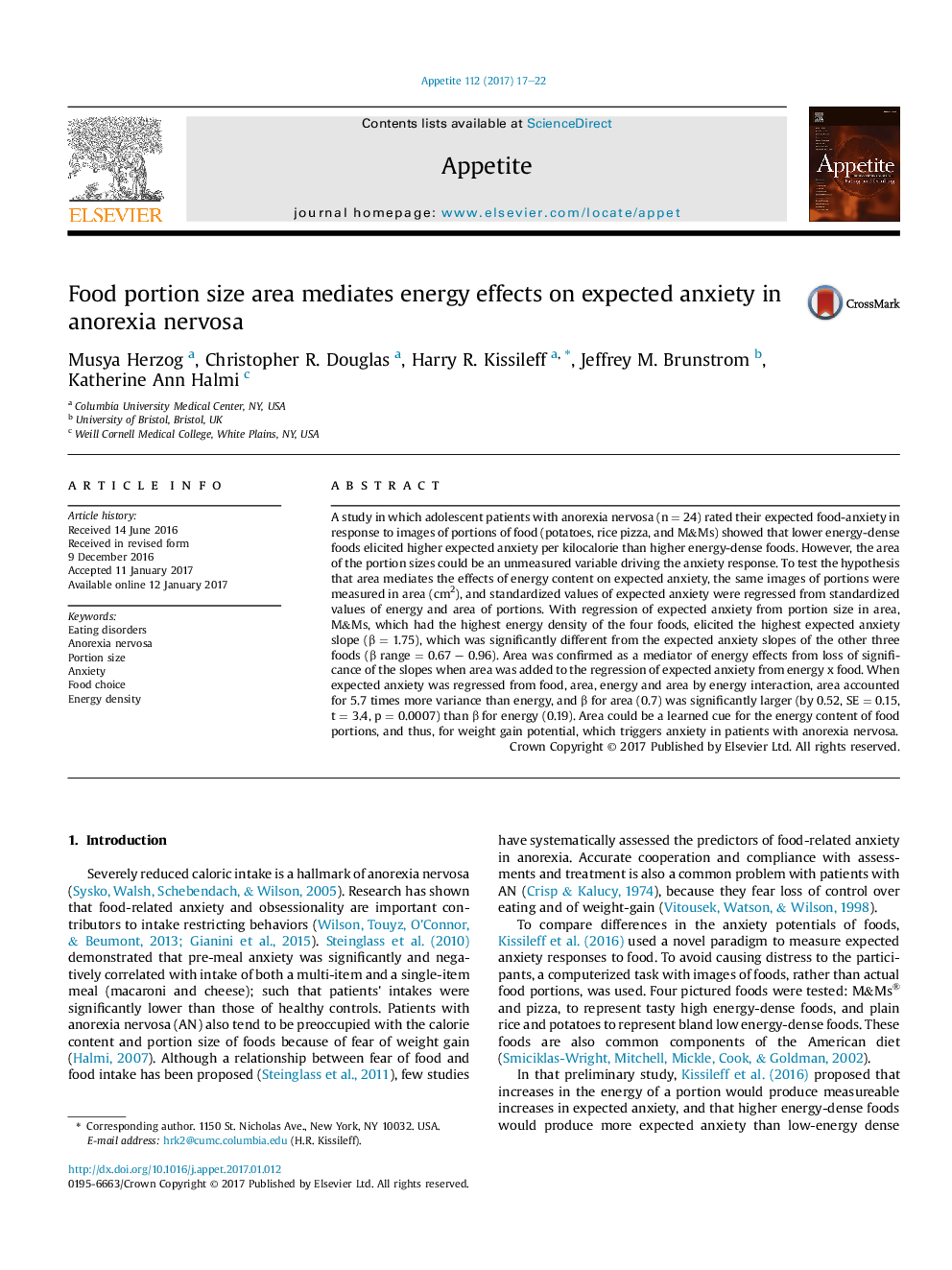| Article ID | Journal | Published Year | Pages | File Type |
|---|---|---|---|---|
| 5044119 | Appetite | 2017 | 6 Pages |
â¢Anxiety increased more per kcal with low rather than high energy-dense foods.â¢Visual inspection suggested food area was driving anxiety responses.â¢Imaging software was used to measure physical area for images of food portions.â¢Anxiety regressed from area was greater for high energy-dense foods.â¢Area mediated the relationship between energy and the anxiety response.
A study in which adolescent patients with anorexia nervosa (n = 24) rated their expected food-anxiety in response to images of portions of food (potatoes, rice pizza, and M&Ms) showed that lower energy-dense foods elicited higher expected anxiety per kilocalorie than higher energy-dense foods. However, the area of the portion sizes could be an unmeasured variable driving the anxiety response. To test the hypothesis that area mediates the effects of energy content on expected anxiety, the same images of portions were measured in area (cm2), and standardized values of expected anxiety were regressed from standardized values of energy and area of portions. With regression of expected anxiety from portion size in area, M&Ms, which had the highest energy density of the four foods, elicited the highest expected anxiety slope (β = 1.75), which was significantly different from the expected anxiety slopes of the other three foods (β range = 0.67 - 0.96). Area was confirmed as a mediator of energy effects from loss of significance of the slopes when area was added to the regression of expected anxiety from energy x food. When expected anxiety was regressed from food, area, energy and area by energy interaction, area accounted for 5.7 times more variance than energy, and β for area (0.7) was significantly larger (by 0.52, SE = 0.15, t = 3.4, p = 0.0007) than β for energy (0.19). Area could be a learned cue for the energy content of food portions, and thus, for weight gain potential, which triggers anxiety in patients with anorexia nervosa.
